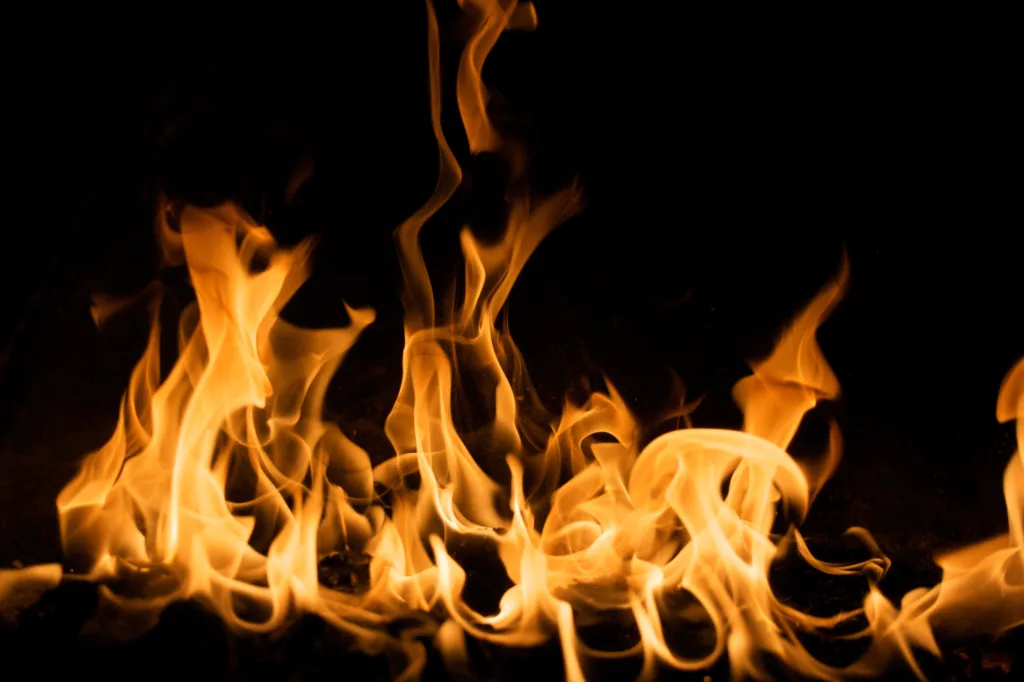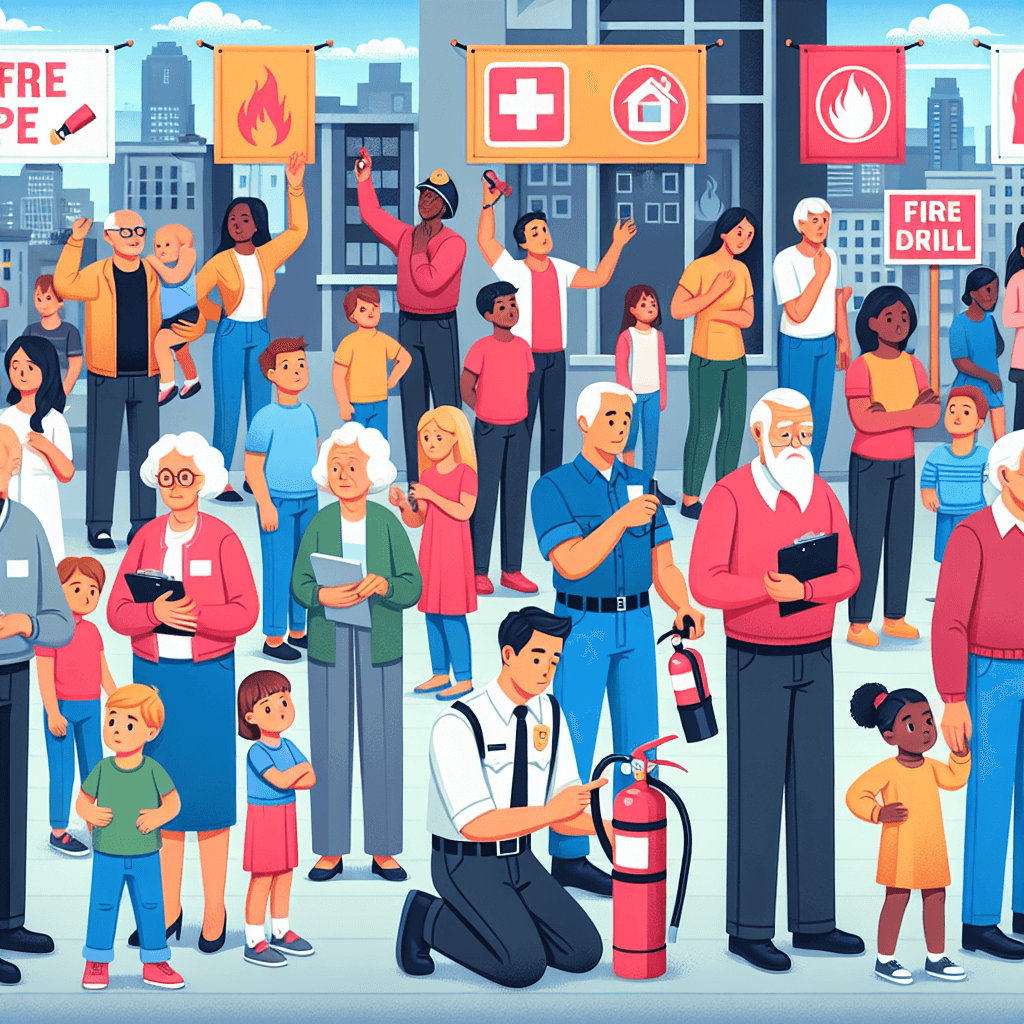In the realm of fire safety, the efficacy of community fire drills has been a subject of ongoing debate. As communities strive to enhance their preparedness and response capabilities, questions have emerged regarding the true value of these drills. This article seeks to shed light on the effectiveness of community fire drills, examining their impact on increasing awareness, promoting safety measures, and fostering a sense of collective responsibility. By delving into the findings of recent studies and analyzing practical insights from experts, we aim to provide a comprehensive account of the benefits and limitations of community fire drills, helping communities make informed decisions about their emergency preparedness initiatives.

Table of Contents
Benefits of Community Fire Drills
Creating Awareness among Community Members
Community fire drills play a crucial role in creating awareness among community members about the risks and hazards associated with fires. By participating in these drills, individuals gain knowledge about fire safety procedures and learn how to respond effectively during emergencies. The drills provide an opportunity for education and training, ensuring that community members are well-informed about fire prevention measures, evacuation routes, and the proper use of fire extinguishers. This heightened awareness ultimately contributes to a safer community with a reduced risk of fire-related incidents.
Improving Preparedness and Response Skills
One of the key benefits of community fire drills is the improvement of preparedness and response skills among participants. Through regular drills, individuals have the opportunity to practice evacuation procedures, fire extinguisher usage, and other essential fire safety techniques. By going through these simulated scenarios, community members can become more confident and competent in responding to actual fire emergencies. The drills also provide a platform for individuals to identify and address any gaps in their preparedness plans, helping to ensure a more efficient and coordinated response in real-life situations.
Identifying Safety Issues and Weaknesses
Community fire drills serve as a valuable tool for identifying safety issues and weaknesses in fire emergency plans. During these drills, participants may uncover potential hazards in the community, such as blocked emergency exits, malfunctioning fire alarms, or inadequate signage. By identifying these issues through the drills, communities can take proactive measures to rectify these problems and enhance their overall fire safety preparedness. Regular evaluation and improvement based on the insights gained from community fire drills can ultimately lead to safer environments for all community members.
Building a Sense of Community and Collaboration
Community fire drills foster a sense of community and collaboration among participants. These drills bring community members together, allowing them to work towards a common goal of fire safety. During the drills, individuals interact and support one another, promoting a collective mindset that prioritizes the well-being of the entire community. The collaborative nature of the drills facilitates the establishment of relationships between community members, emergency responders, and local organizations, fostering a strong sense of unity and responsibility. This interconnectedness can be instrumental in creating resilient communities that are better equipped to handle emergencies.
Barriers to Effective Community Fire Drills
Lack of Participation and Engagement
A significant barrier to the effectiveness of community fire drills is the lack of participation and engagement from community members. For various reasons, individuals may choose not to actively participate in the drills, which can hinder the overall impact of these initiatives. Lacking participation reduces the chances of a comprehensive evaluation of fire safety plans, and it also limits the dissemination of fire safety knowledge and skills throughout the community. Overcoming this barrier requires targeted efforts to engage and motivate community members to participate actively in fire drills.
Inadequate Resources and Planning
Another barrier to effective community fire drills is the lack of adequate resources and planning. Insufficient funding, limited access to training materials, and inadequate support from local authorities can impede the successful implementation of drills. Without proper planning, drills may not accurately simulate real-life scenarios, compromising the effectiveness of the training. Addressing this barrier requires the allocation of sufficient resources, both financial and material, and a comprehensive planning process that takes into account the unique needs and characteristics of the community.
Limited Accessibility for People with Disabilities
Community fire drills may face challenges in ensuring full accessibility for individuals with disabilities. The physical environment, communication methods, and evacuation procedures may not be adequately tailored to accommodate the specific needs of people with disabilities. This lack of accessibility can exclude a significant portion of the community from fully participating in and benefiting from the drills. Overcoming this barrier involves implementing inclusive practices, such as providing alternative evacuation routes, accessible communication methods, and training specifically designed for people with disabilities.
Language and Cultural Barriers
Language and cultural barriers pose additional challenges to effective community fire drills. Communities with diverse cultural and linguistic backgrounds may encounter difficulties in disseminating fire safety information and instructions effectively. Communication gaps can hinder understanding and hamper the ability of community members to respond appropriately during fire emergencies. Overcoming this barrier requires the use of culturally sensitive communication strategies, such as providing multilingual materials, utilizing interpreters, and ensuring that fire safety information is presented in a culturally relevant and easily understandable manner.
Factors Influencing the Effectiveness of Community Fire Drills
Regularity and Frequency of Drills
The regularity and frequency of community fire drills significantly influence their effectiveness. Regular drills ensure that participants have repeated opportunities to practice and reinforce their fire safety skills. By conducting drills at appropriate intervals, community members can develop muscle memory and instinctual responses, enhancing their ability to act swiftly and correctly during fire emergencies.
Quality of Training and Education
The quality of training and education provided during community fire drills plays a vital role in their effectiveness. Well-designed training programs that cover essential fire safety knowledge, evacuation techniques, and fire extinguisher usage are essential. The drills should provide clear instructions and opportunities for hands-on practice, allowing participants to gain confidence and expertise in fire safety procedures.
Involvement of Fire Department and Emergency Services
The involvement of the fire department and emergency services is essential for the effectiveness of community fire drills. Their expertise and guidance ensure that drills are conducted in accordance with best practices and local regulations. The presence of emergency responders during drills also provides participants with a sense of security and confidence, reinforcing the importance of the training.
Integration with Local Emergency Response Plans
For maximum effectiveness, community fire drills should be integrated with local emergency response plans. The drills should align with established protocols and procedures, ensuring seamless coordination between community members and emergency responders. This integration fosters a unified approach to fire safety and facilitates effective communication and collaboration during emergencies.
Examples of Successful Community Fire Drills
Case Study: City X’s Annual Fire Drill Event
City X has developed an impressive annual fire drill event that has garnered substantial success in increasing fire safety awareness and preparedness among its residents. The event encompasses various activities tailored to different segments of the community, including schools, residential areas, and businesses. The fire department, along with other stakeholders, coordinates the event, ensuring comprehensive coverage of fire safety topics and hands-on training opportunities for participants. Through a combination of engaging activities, informative workshops, and realistic simulations, City X has successfully created a memorable and impactful fire safety initiative.
Case Study: Community Y’s Fire Drill Program for Schools
Community Y has implemented a highly effective fire drill program targeted specifically at schools. Recognizing the importance of educating and empowering students and educators, the program incorporates age-appropriate fire safety education, regular drills, and collaboration with the local fire department. The program encourages proactive engagement from all stakeholders, including students, teachers, parents, and local authorities. By focusing on schools, Community Y ensures that the next generation is equipped with the necessary knowledge and skills to respond to fire emergencies confidently and effectively.

Evaluating the Effectiveness of Community Fire Drills
Post-Drill Surveys and Feedback
One method of evaluating the effectiveness of community fire drills is conducting post-drill surveys and gathering feedback from participants. These surveys assess participant satisfaction, understanding of fire safety procedures, and perceptions of the drill’s effectiveness. Feedback provides valuable insights into strengths and weaknesses of the drills, enabling organizers to make necessary improvements and adjustments.
Assessing Improvement in Response Time
Measuring the improvement in response time is another effective way to evaluate the effectiveness of community fire drills. By comparing the time taken to respond to simulated fire emergencies during different drills, organizers can identify progress in participants’ ability to react promptly and efficiently. A decrease in response time demonstrates the successful impact of the drills in improving participants’ readiness to handle real-life fire incidents.
Measuring Reduction in Casualties and Property Damage
The ultimate goal of community fire drills is to prevent casualties and minimize property damage in the event of a fire. Evaluating the effectiveness of the drills can involve measuring the reduction in casualties and property damage over time. This data provides concrete evidence of the drills’ impact on the community’s overall fire safety and underscores the importance of continued investment in these initiatives.
Monitoring Community-wide Preparedness Levels
An effective evaluation method for community fire drills is monitoring the community’s overall preparedness levels. This can involve conducting periodic assessments of fire safety plans, ensuring that emergency response equipment is well-maintained, and reviewing compliance with safety standards. Monitoring preparedness levels allows organizers to gauge the long-term impact of the drills and identify areas that require further attention and improvement.
Best Practices for Effective Community Fire Drills
Promoting Active Participation and Engagement
To maximize the effectiveness of community fire drills, it is crucial to promote active participation and engagement from community members. This can be achieved by creating awareness campaigns, distributing informational materials, and organizing community meetings to discuss the importance of fire safety. Incentives, such as certificates of participation or recognition, can also encourage individuals to actively engage in the drills.
Customizing Drills to Address Specific Community Needs
Each community has unique characteristics and requirements that must be taken into consideration when designing fire drills. Customizing drills to address specific community needs ensures that participants are practicing relevant skills and procedures in a familiar context. For instance, a community with a high population of older adults may focus on evacuation procedures for individuals with mobility issues.
Providing Clear Instructions and Fire Safety Education
Clear and concise instructions are essential for effective community fire drills. Organizers should ensure that participants receive adequate fire safety education and are familiar with evacuation routes, assembly points, and emergency contacts. The use of visual aids, multilingual materials, and interactive presentations can enhance understanding and participation.
Monitoring and Updating Emergency Response Plans
Regular monitoring and updating of emergency response plans are critical for maintaining the effectiveness of community fire drills. Organizers should review and revise plans based on feedback and evaluations from drills. This ongoing process ensures that emergency response protocols remain accurate, up-to-date, and aligned with changing community needs and circumstances.

Challenges in Implementing Community Fire Drills
Gaining Community Buy-In and Support
One of the challenges in implementing community fire drills is gaining community buy-in and support. Some individuals may perceive drills as inconvenient or unnecessary, resulting in apathy or resistance. Overcoming this challenge requires comprehensive communication strategies, including clear explanations of the benefits of the drills and continuous engagement with community members to address their concerns and encourage participation.
Overcoming Resistance and Complacency
Community fire drills may encounter resistance and complacency from individuals who believe that such incidents could never happen to them. Overcoming this challenge involves highlighting real-life examples and statistics to demonstrate the importance of preparedness. Continual reminders and periodic drills can help to prevent complacency and reinforce the need for ongoing vigilance.
Maintaining Sustained Momentum and Funding
Maintaining sustained momentum and securing adequate funding for community fire drills can be challenging. It is crucial to highlight the long-term benefits of the drills and to advocate for continued investment in fire safety initiatives. Engaging local government entities, community leaders, and private donors can help in securing the necessary funding and resources for sustained implementation.
Addressing Liability Concerns
Liability concerns surrounding community fire drills can pose challenges to their implementation. Organizers must ensure that appropriate insurance coverage and safety measures are in place to mitigate any potential risks. Collaboration with legal advisors can help address liability concerns and develop strategies to minimize associated risks.
Role of Community Leaders and Organizations in Fire Safety
Collaboration with Fire Departments and Emergency Services
Community leaders and organizations play a crucial role in fire safety by fostering collaboration with fire departments and emergency services. By working together, they can ensure the effective planning and implementation of community fire drills. Community leaders can provide support in terms of resources, personnel, and outreach, while fire departments and emergency services can offer expertise and guidance to enhance the drills’ effectiveness.
Creating Fire Safety Committees or Task Forces
Establishing fire safety committees or task forces is an effective way for community leaders and organizations to take an active role in fire safety initiatives. These committees can be responsible for organizing and coordinating community fire drills, raising awareness, and developing strategies to address fire safety concerns within the community. By having dedicated committees, community leaders can ensure a sustained commitment to fire safety and a coordinated approach to emergency preparedness.
Raising Awareness and Promoting Fire Safety Measures
Community leaders and organizations have a vital role in raising awareness and promoting fire safety measures. They can organize workshops, conferences, and educational campaigns to disseminate valuable information about fire prevention, evacuation procedures, and the proper use of fire safety equipment. By actively promoting fire safety, they can encourage community members to prioritize fire prevention and preparedness.
Securing Funding and Resources
Community leaders and organizations have a responsibility to seek and secure funding and resources for fire safety initiatives, including community fire drills. They can engage with local businesses, government agencies, and philanthropic organizations to advocate for financial support. By actively seeking resources, community leaders can ensure that fire safety programs can be implemented effectively without being hindered by financial constraints.

Addressing Special Considerations in Community Fire Drills
Adapting Drills for Vulnerable Populations
Special consideration must be given to adapting community fire drills to meet the needs of vulnerable populations, including older adults, children, and individuals with disabilities. Organizers should ensure that evacuation procedures and communication methods are accessible and inclusive. The involvement of caregivers and specialized training programs can help address the specific needs of these populations during fire drills.
Incorporating Language and Cultural Sensitivity
In multicultural communities, language and cultural sensitivity are critical factors in the effectiveness of community fire drills. Organizers should provide multilingual materials and utilize interpreters to ensure that all community members can fully understand and comprehend fire safety information. Cultural norms and customs should also be taken into account to ensure the drills are culturally appropriate and encourage active participation from diverse populations.
Ensuring Accessibility for People with Disabilities
Community fire drills must ensure full accessibility for individuals with disabilities. This includes providing accessible routes for evacuation, clear communication methods that accommodate various disabilities, and appropriate training for emergency responders on how to support individuals with disabilities during drills. By addressing accessibility needs, community fire drills can become more inclusive and beneficial for all participants.
Engaging Children and Schools in Fire Safety
Involving children and schools in fire safety initiatives is crucial for the long-term success of community fire drills. Through school-based programs, children can learn about fire prevention, evacuation procedures, and the importance of fire safety. In turn, children become valuable advocates for fire safety within the community, encouraging their families and peers to adopt safe practices. Engaging children in drills also helps to instill a sense of responsibility and preparedness from an early age.
Conclusion
Community fire drills are highly effective in creating awareness, improving preparedness, and building a sense of community and collaboration. Despite the barriers and challenges faced, these drills provide invaluable opportunities for education, practice, and evaluation. By implementing best practices, evaluating effectiveness, and engaging community leaders and organizations, community fire drills can contribute significantly to fire safety and overall community resilience. With continued commitment and collaboration, communities can create safer environments and effectively respond to fire emergencies.


